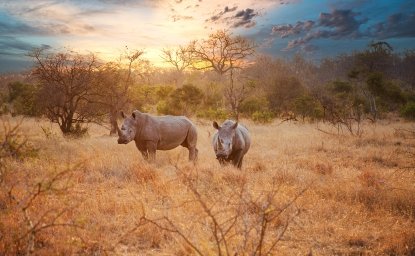
A blog of the Wilson Center

In 2023, the rate of deforestation in the Brazilian Amazon rainforest was cut in half, the US reduced its carbon emissions by 2%, and scientists in Australia discovered common molds that can break down some plastics in only 140 days.
Smog-inducing forest fires in Canada. Historic floods in South Asia. Cyclones in East Africa. Last year, our world was struck by a wide range of climate shocks that impacted millions of lives and, understandably, captured much of our attention. But 2023 also brought glimmers of hope… modest signs of progress suggesting that we can build a healthier environment, and cleaner future.
The Amazon rainforest is often called the “lungs of the world.” On its own, it stores more than 150 billion metric tons of carbon. For many years, scientists have decried the level of deforestation in the Amazon region, and the accompanying loss of both biodiversity and atmospheric cleansing. Many have warned that we’re reaching a tipping point of sorts when much of the Amazon could be beyond recovery—a Stubborn Thing I wrote about in late 2022 as rainforest destruction accelerated.
In 2023, according to recent data and analysis, the Amazon rainforest’s deforestation rate in Brazil was cut in half. In fact, Brazil’s foreign ministry reports that it was the lowest-recorded deforestation rate in five years. President Luiz Inacio Lula da Silva, who took office in January, made an ambitious pledge to eliminate deforestation in the country by 2030. None of this is to say that years of deforestation and environmental degradation will be repaired or reversed anytime soon, but it is a hopeful sign.
Australia, the “land down under,” also offered hopeful signs last year. Twenty-six species—including the greater bilby and the sooty albatross—grew their numbers enough to be taken off the list of those threatened under the country’s Environment Protection and Biodiversity Act. Furthermore, scientists at the University of Sydney discovered two types of commonly-found mold that could be used to break down plastics in about 140 days. This is the fastest degradation rate ever reported, and might, just might, offer new ways for us to reduce the level of plastics in rivers, seas, and landfills.
Here in the US, good environmental news rarely makes the headlines. But in 2023, US carbon pollution declined by nearly 2%. To be sure, 2% isn’t a huge number given our ambitious clean energy and healthier atmosphere goals, and at a time of continued coal-fired plant construction in places like China and India, but it is progress. The United Nations Environment Program has reported that the ozone layer, which absorbs the sun’s ultraviolet radiation, could be on track to “heal” by 2040 if current policies limiting ozone-depleting substances are kept in place. The UN group has reported a successful phase-out of almost 99% of banned ozone-depleting substances since the signing of the Montreal Protocol in 1987.
We are still a long way from achieving the ambitious goals set out in the Paris Agreement—limiting global warming to 1.5-2 degrees Celsius and net zero emissions by 2050. And we are likely to see many more extreme climate events in the coming years. BUT there are glimmers of hope and signs of progress. Ingenuity and innovation, common sense and creativity, as well as the Earth’s own remarkable resilience, suggest that we shouldn’t let gloom and doom dominate the news—or our thinking.
This essay was researched and drafted with the assistance of Christopher Cao and Katherine Schauer.
Author

Explore More in Stubborn Things
Browse Stubborn Things
Spying on Poachers

China and the Chocolate Factory

India: Economic Growth, Environmental Realities
